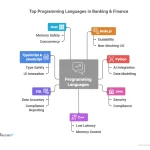
file_thumbview_approve.php?size=1&id=22902066
Financial Forecasting and Analysis is the process of making predictions on the future growth prospects of a company. It is based on past records, trends, and data.
It is a valuable business tool that helps management teams make decisions on future growth, and it is also essential for investors. It can help shareholders plan for the long term and adjust their holdings in short-term investments.
The Future of Business
The business world is continually changing and companies that remain flexible and responsive to new trends will be able to thrive. According to a report by Accenture, the future of business will revolve around new technologies that allow companies to adapt to changing consumer needs and demands.
For example, businesses that take advantage of artificial intelligence and robotics may be able to create better products and reduce production costs. In addition, they may be able to use data analysis to identify customer habits and needs and tailor their products to those preferences.
Financial forecasting is an important part of the process and can help companies grow. Using historical data, industry trends and macroeconomic information, it is possible to predict the revenue and expenses of a company.
It is also necessary to reassess financial models on a regular basis to ensure that they are still accurate and up-to-date. This will allow leaders to make timely, strategic decisions that will help them achieve growth goals and increase market share.
The Importance of Financial Forecasting
Financial forecasting and analysis are a critical component of a company’s success. When done well, it provides business owners with insight into their finances and helps them spot any issues that might affect cash flow.
When used properly, financial forecasting can help you make informed decisions about your business – from funding a capital project to hiring new employees and renting a larger space. You can also use it to estimate your future tax bill and prevent surprises at tax time.
A financial forecast involves examining historical data, marketplace trends and broader economic factors to create an estimate of how a company will perform in the future. It can range from several weeks to several years, although most companies do a forecast for one fiscal year at a time.
The Methods of Financial Analysis and Forecasting
Financial forecasting is the process of predicting the future performance of a business, based on current trends and historical data. It is a critical tool for companies of all sizes, as it helps gauge where to allocate resources and how to position a company for growth.
For example, if a company is expecting an increase in sales, it will need to calculate the resulting increase in raw materials, inventory and other expenses to support this growth. This information can be used to create a financial model, which will then predict the impact on the income statement, balance sheet and cash flow.
There are many methods of creating financial forecasts, including straight-line, moving average, simple linear regression and multiple linear regression. Each method has its advantages and disadvantages, so it is important to choose the best one for your business needs.
The Benefits of Financial Analysis and Forecasting
Financial analysis and forecasting help companies make smart business decisions based on future trends. They also help companies understand how to mitigate risks and meet budgeting goals during a fiscal period.
Despite the fact that there are many unforeseen factors that can impact a business’s financial performance, it is essential to predict and plan for them in order to avoid negative outcomes. This will enable a company to keep its shareholders happy and reassure the public that it is on track for success.
A financial forecast is the baseline projection of a business’s cash flow and expenses over a certain time period. This can be done through a profit or loss statement and balance sheet.






